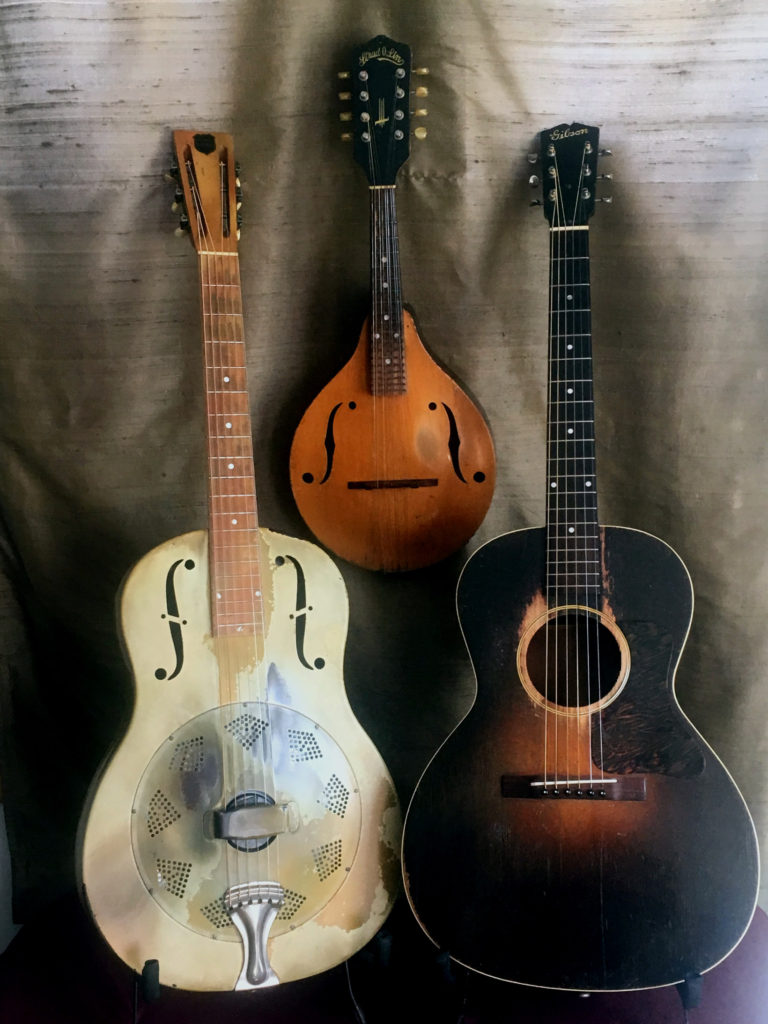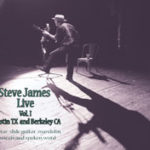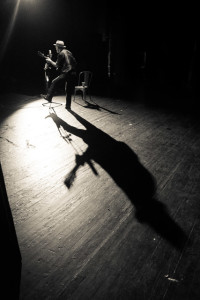The “Two Track Mind” guitars and my first mandolin
Housecleaning recently turned up some boxes of my Two Track Mind album (CDs and cassettes… still in the shrink wrap) that I got as part of a legal settlement with Antone’s Records, the Austin label that picked up that title after my indie cassette release in 1989 had gotten some reviews and airplay and consequently moved a few units. It was that album which got me out of Texas and on the road, and I still have the guitars I used on those sessions along with my first mandolin; my only functional acoustic instruments at the time. Over 30 years later they’re still in good playing order, and each has a bit of a story.
The Gibson logo and appointments on the L-00 along with the barely legible factory order number (779) stamped inside date the guitar ca. 1934. San Antonio bassist and guitar tech Scott Harrison passed it on to me as a “project”; a mess of open seams, active cracks, loose braces and after-factory screw holes where a tailpiece had quick-fixed a detached bridge. There was still a ‘30s L-00 in there however, and some workbench time proved it to be a very good one! Retired from regular road work in the early ‘90s when Collings set me up with the original black-and-pearloid C-10, the Gibson still gets regular use; requested specifically as a loaner by visiting friends like Elijah Wald and Suzy Thompson (who, as we’ve agreed, can have it when I’m dead).
National Triolian #1707P (1930) was a birthday gift from master musician and keeper of the jarocho flame Francisco Gonzalez who got it for $100 as an unclaimed repair from a guitar shop in Los Angeles. The considerable play wear on the face and cover plate is mostly my doing, a long legacy of Texas bar gigs, (The black stenciled palm trees over green polychrome on the back are still nearly pristine.) The unmistakeable voice of this instrument really came across on the “Two Track” sessions (and subsequently on my “Short Blue Stories” project where engineer/guitarist Rich Brotherton singled it out for certain tracks). It just sounds… old!
Strad-o-lin mandolins are enigmatic. Not even vintage pundits can date them with surety, saying instead that they’re “from the ‘40s”. Who made them? Kay… probably. This one had just come out of pawn for $49.95 at Major Bill’s Liberty Loan in Johnson City, Tennessee the day I delivered a Gibson ES-335 on which I’d done $50 worth of fret work and set-up. (These are 1973 prices.) Bill was happy. So was I, kind of. What I’d really wanted was a Gibson, and what I got was a plywood and stencil thing possibly made by Kay in, like, the ’40’s. The nature of the case was complicated by the fact that it took years to find a Gibson I could afford that played and sounded better than the Strad-o-lin! It’s still working fine and, when a recent boating and fishing video episode for FaceBook called for an on board mandolin, the choice of instrument was obvious.







